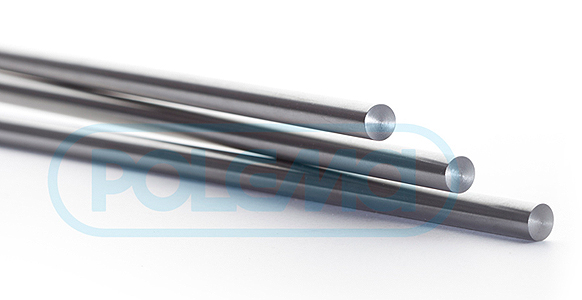13.10/2023
POLEMA presented at the“BIOTECHMED” its innovative medical products
11.07/2023
POLEMA at INNOPROM in Ekaterinburg
Molybdenum electrodes
The glass industry is a major consumer of metallic molybdenum. Experience has shown molybdenum to be a superior material for electric heating during smelting of glass and basalt. This industry's use of molybdenum in the form of electrodes is conditioned by the following characteristics of the material:
- high elasticity modulus, resistance to plastic deformation, and sufficient durability at the melting temperatures of glass and basalt;
- good heat conductivity;
- a low coefficient of heat expansion;
- resistance to corrosion in molten solutions;
- no influence on the color or transparency of glass;
- good machinability.
Mo99.95-PM electrodes are used in electric furnaces to smelt container and flat glass, technical glass, and basalt. Smelting glass and basalt in electric furnaces makes it possible to conduct the boiling process with greater productivity.
The chemical purity of electrode material (99.95% Mo) and the special program of temperature-deformation processing of stock used at JSC POLEMA allows for products with high density and resistance to creeping (deformation) at the working temperatures for glass boiling.
Characteristics
Electrodes are delivered in annealed condition in the form of tooled rods or plates based on plans agreed upon with the client.
Based on the order, electrodes can be produced with connective cuts.
Electrode density is >99%, and Vickers hardness HV 10 ranges from 160 to 210.
To increase resistance to creeping (bending, deformation), the average grain size of the microstructure of electrodes upon delivery is set within the range from 50 to 300 microns.
| Electrode type |
Diameter d, mm |
Allowance for d, mm |
Roughness Ra |
Length allowance, mm |
| Turned | From 25 to 30 | ± 0,26 | 2,5 | <± 6,35 |
| > 35 до 50 | ± 0,31 | 2,5 | ||
| > 50 до 80 | ± 0,37 | 2,5 | ||
| Grind | From 25 and more | ± 0,08 | 1,25 |
Electrode length, and diameters of more than 80 mm, are set based on client request.
| Brand | Мo,% | Admixtures, ppm, maximum | |||||||||||
| O | N | C | Fe | Al | Ni | Si | Mg | Na | K | Ca | W | ||
| M 99,95-МП | >99,95 | 70 | 50 | 100 | 100 | 30 | 50 | 50 | 20 | 30 | 80 | 40 | 130 |
| ∑Fe, Si, Ni, Al, W, Mg, Na, K, Ca <400 | |||||||||||||
| Total content of metallic admixtures <500 | |||||||||||||
|
Electrode dimensions |
Мo, % | Admixtures, ppm | |||||||||||
| O | N | C | Fe | Al | Ni | Si | Mg | Na | K | Ca | W | ||
| Ø48х1000 | >99,95 | 60 | 20 | 27 | 44 | 10 | 10 | 10 | 10 | 10 | 30 | 10 | 130 |
| Ø50,8х631 | 40 | 20 | 50 | 43 | 10 | 10 | 10 | 10 | 10 | 20 | 10 | 115 | |
| Ø63х1000 | 70 | 20 | 14 | 37 | 10 | 10 | 10 | 10 | 10 | 30 | 10 | 130 | |

The structure of a Mo99.95-PM large-grain electrode, which ensures high resistance to creeping
Advantages:
- high purity of the material;
- minimal content of interstitial impurities;
- maximal density;
- homogenous structure throughout the entire length;
- high durability and operating endurance;
- lack of effect on the color and transparency of glass;
- good machinability.

